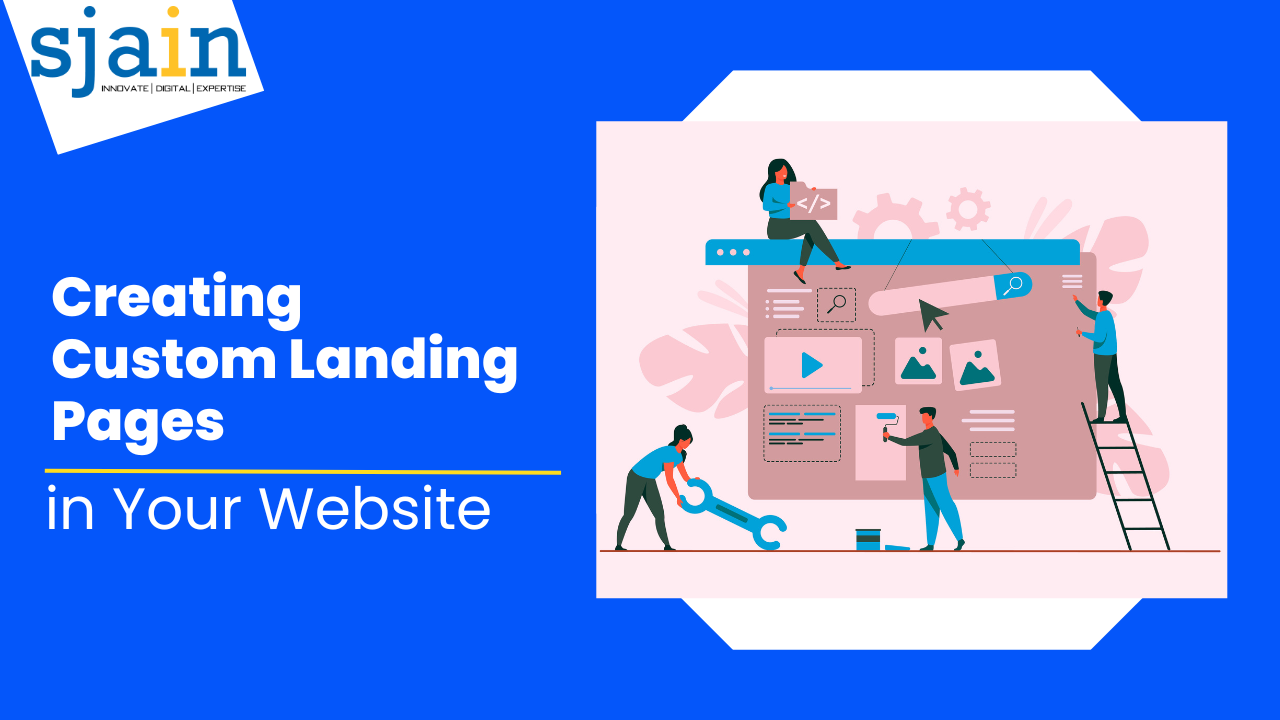Creating Custom Landing Pages in Your Website
Creating a compelling online presence is crucial for businesses to attract and engage their target audience. One effective strategy for achieving this is by creating custom landing pages on your website. We will discuss the significance of bespoke landing pages and present a step-by-step tutorial for creating them.
In today’s digital landscape, having a well-designed and optimized website is essential for any business. However, a generic homepage might not always be enough to convert visitors into customers. That’s where custom landing pages come in. These tailored pages are designed to capture the attention of specific audience segments and guide them toward a desired action, such as making a purchase or signing up for a newsletter.
Importance of Custom Landing Pages in Your Website
Custom landing pages offer several benefits that can significantly impact your website’s performance. Firstly, they provide a focused and targeted experience for your visitors. By aligning the content and design of your landing page with the specific needs and interests of your audience, you can increase the likelihood of conversions and achieve higher conversion rates.
Secondly, custom landing pages allow you to showcase your products, services, or offers in a more persuasive and compelling way. Unlike a generic homepage, a landing page can be designed to highlight the unique selling points of a particular product or service, making it more likely for visitors to take action.
Understanding Custom Landing Pages and What are custom landing pages?
Custom landing pages are standalone web pages that are created specifically for a marketing campaign or a particular target audience. They are distinct from your website’s main navigation and often serve as an entry point for visitors from various marketing channels such as social media, email marketing, or pay-per-click advertising.
Benefits of using custom landing pages
Using custom landing pages can have a significant impact on your marketing efforts. Some of the key benefits include:
Increased conversion rates
By delivering a tailored experience to your audience, you can improve your conversion rates and drive more valuable actions on your website.
Enhanced message consistency
Custom landing pages allow you to maintain a consistent message and branding throughout the visitor’s journey, reinforcing your value proposition and building trust.
Improved SEO performance
Landing pages optimized for specific keywords and user intent can help improve your website’s overall search engine optimization (SEO) performance.
Better data and insights
Custom landing pages provide valuable data and insights into the effectiveness of your marketing campaigns, allowing you to make data-driven decisions and optimizations.
Creating Custom Landing Pages
To create effective custom landing pages, follow these step-by-step guidelines:
Define your goal and target audience
Before creating a landing page, clearly define your goal and identify your target audience. Are you looking to generate leads, promote a product, or provide information? Understanding your objective will help you design a landing page that aligns with your desired outcome.
Identify your target audience by considering demographics, interests, and pain points. This knowledge will enable you to tailor the content and design to resonate with their needs.
Conduct keyword research
Perform thorough keyword research to identify relevant search terms and phrases related to your landing page’s topic. This will help optimize your page for search engines and ensure it reaches the right audience. Use tools like Google Keyword Planner or SEMrush to find popular and low-competition keywords.
Design an engaging layout
Create an eye-catching and user-friendly layout for your landing page. Use appealing colors, fonts, and images that align with your branding. Ensure the layout is clean and uncluttered, with clear sections and a logical flow.
Write compelling copy
Craft compelling copy that communicates the value proposition of your product or service. Highlight the benefits, address pain points, and create a sense of urgency or exclusivity. Keep the text concise, easy to read, and engaging.
Add relevant images and videos
Visual content can significantly enhance the impact of your landing page. Include relevant images, infographics, or videos that support your message and captivate your audience. Visuals can help convey complex information in a digestible and memorable way.
Incorporate clear call-to-action
A clear and prominent call-to-action (CTA) is vital for guiding your visitors toward the desired action. Use persuasive language and make the CTA stand out visually. Whether it’s a “Buy Now” button or a sign-up form, make it easy for visitors to take the next step.
Optimizing Custom Landing Pages for SEO
To ensure your custom landing pages are SEO-friendly, consider the following optimization techniques:
Use relevant keywords
Incorporate your target keywords naturally throughout your landing page content. Include them in headings, subheadings, body text, and meta tags. However, avoid keyword stuffing, as it can harm your SEO efforts.
Optimize meta tags and URLs
Write compelling meta titles and descriptions that entice users to click through from search engine results pages. Include your target keywords while maintaining clarity and relevance. Additionally, optimize your landing page URLs to be concise, descriptive, and keyword-rich.
Improve page loading speed
Page loading speed plays a crucial role in user experience and SEO. Optimize your landing page by compressing images, minifying code, and leveraging caching techniques. Test your page’s speed using tools like Google PageSpeed Insights and make the necessary optimizations.
Make it mobile-friendly
With the rise of mobile browsing, it’s essential to ensure your landing pages are mobile-friendly. Use responsive design techniques to adapt your page’s layout and content to different screen sizes. Test your landing page on various devices to ensure a seamless experience.
Testing and Analyzing Landing Pages
To optimize the performance of your landing pages, it’s important to conduct testing and analysis:
A/B testing
Perform A/B tests to compare different versions of your landing page and identify which elements resonate best with your audience. Test variations in headlines, copy, visuals, and CTAs. Analyze the results to make data-driven decisions and continuously improve your landing pages.
Analyzing user behavior
Utilize tools like Google Analytics or Heatmaps to track user behavior on your landing pages. Analyze metrics such as bounce rate, time on page, and conversion rates. Identify areas where visitors may be dropping off or experiencing difficulties and make the necessary adjustments.
Monitoring and Updating Custom Landing Pages
Creating custom landing pages is an iterative process. Continuously monitor and update your landing pages to optimize their performance:
Track performance metrics
Monitor key performance indicators (KPIs) such as conversion rates, click-through rates, and engagement metrics. Regularly review these metrics to gauge the effectiveness of your landing pages and identify areas for improvement.
Make data-driven improvements
Use the insights gathered from testing and analytics to make data-driven improvements to your landing pages. Adjust headlines, copy, visuals, or CTAs based on user behavior and conversion data. Aim for incremental enhancements that contribute to better performance over time.
Conclusion
Creating custom landing pages is a powerful strategy for engaging your target audience and driving conversions on your website. By understanding the importance of custom landing pages, following a step-by-step process, and optimizing for SEO, you can create compelling pages that resonate with your audience and achieve your marketing goals. Remember to continuously test, analyze, and update your landing pages to maximize their effectiveness.

